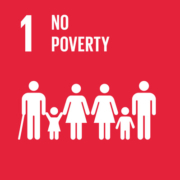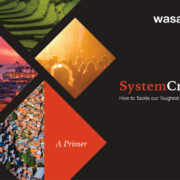Scott Hinkle recently joined Wasafiri as our Team Leader for the Regional Countering Violent Extremism Research Unit (RRU). He started his work with Wasafiri with a quick trip to Washington to attend the CVE Symposium (April 6-7, 2016) and did a great summary write-up for the rest of us left at home. We thought it would be worth sharing more generally, so here it is:
On April 6-7, 2016 I attended a two-day CVE Symposium hosted by the International Peace and Security Institute (IPSI) and Creative Associates in Washington DC. There were around 200-225 CVE analysts, practitioners, and leaders in attendance. It was a very impressive, well-organised and participatory conference with multiple break-out and small group sessions. Here are some of the key themes that resonated for me:
- Conflict prevention is key. Some of the key speakers were Special Operations Commander of SOCOM, US Senator and Cory Booker, the Secretary General for the US Department of Homeland Security, Jeh Johnson and an introduction presented by UN Secretary General, Ban Ki Moon. All emphasised the need to increase violence prevention measures and capacities of vulnerable communities to address VE.
- CVE is largely undefined, misunderstood and underfunded. “Resources are the fundamental expression of priorities.” Conflict prevention has been advocated in the VE arena for some time, but only recently has it gained funding traction in the US. Still, compared to Counter Terrorism, CVE is a tiny drop in the bucket of the billions spent per year on the military and intelligence sectors. CVE also suffers from the growing pains of a burgeoning and newly funded field. Lastly, there was little discussion on overarching definitions of VE, or even CVE. Recognition was given to the difficulties in defining both, but that all programmes should operate around what VE/CVE mean at the micro-level.
- Working in and on the local context was the most prominent point of the conference. “Trust is the strategic and operational capital for CVE programmes.” Understanding the micro, or community-level, environments is the only way CVE is effective. Literally every speaker and discussion mentioned that the local perception of the push factors and, importantly, the “how” of the pull factors, is unique to every area and vulnerable population. Thus, CVE programmes must be community-led, targeted and intentional.
- Well-thought-out framing of CVE programmes is key to local and international acceptance. “Never use CVE to frame a programme.” “All CVE efforts should be integrated into other community-led programmes.” I completely agree with the first quote, as labelling a programme CVE increases the risk to the community and CVE practitioners. Framing a programme as CVE also has many unintended negative connotations linked to militarisation, oppression and even neo-colonialism that limit community, government, NGO and international cooperation. It is important to bring in broader development and humanitarian coalitions and a CVE label will instantly isolate the programme.
- CVE programmes must be agile. The flexibility and adaptability of CVE programmes was consistently and boldly emphasised. In VE and fragile contexts, change is the norm. CVE programmes will always be operating with a deficit of information. Thus, programmes must have systems for local contextual analysis and organisational learning that consistently integrate new understanding and contextual changes.
- Difficulty of M&E in CVE. Obtaining specific metrics for local-level context and conflict prevention is essential for success and future funding of CVE. However, everyone recognised that utilising tangible and quantifiable indicators expressing “prevention” was often (but not always) difficult to achieve. Avenues to explore, and that donors seemed amenable to, were “plausible correlations” of precursors to violence and the USAID Learning Lab indicator free M&E approaches, such as outcome harvesting and most significant change.
- Complex systems thinking is the logical approach for CVE but difficult to implement. The intent is to learn and improve activities by learning with the community. The overall question should be, “how does change take place in that community/system?” Once that is understood, then CVE programmes would be effective at integrating into, and thus influencing, the system of change. Below are some bulleted thoughts on this subject:
- Investigate geographic-focused pull factor systems.
- Use real-time operational research to identify gaps between project designs and outcomes and inform a learning-by-doing approach.
- Focus on listening and learning over solutions to problems. The goal of CVE projects should not be to meet predetermined benchmarks, but to learn which elements of one’s initial understanding of the system were right and which were wrong.
- Use systems thinking and visualisation to demonstrate the multiple and parallel entry/focal points for interventions in a targeted community.
- Use a continually evolving portfolio of interventions.
- Answer the questions: 1) How do we gather data to represent the complex environment?; 2) How do we programme better in a complex environment?; 3) How are we going to get quick wins using complex theory?
- Use mixed methodologies/theories besides and with complex systems.
- Linear or “problem then solution” Theories of Change (ToCs) are difficult to utilise in the complex and ever-changing VE environments. Thus, the following concepts enhance the effectiveness of ToCs in the CVE arena.
- The ToC needs to be presented as an overarching framework that explains how the programme intends to work, but without detailing the specific mechanisms of change (i.e. interventions).
- The first version of ToC should still be fairly general since we cannot yet know much about the intricacies of how change happens. It essentially is the representation of our knowledge and hypotheses we start off with.
- There should be a ToC that is specifically centered on the flexibility, adaptability and learning of CVE programmes.
- Use technology to capture local and national context, sentiment and narratives. “What’s in people’s minds becomes actions.” The importance of social media analysis as a component to any CVE programme cannot be understated. The tech analysts expressed over and over that there are so many inexpensive and open-source (free) software programmes that are under-utilised. E.g.
- Agolo: Summarises large amounts of text in seconds, plug in news sources and subjects and it creates daily/weekly news letters, performs social media analysis. http://www.agolo.com This is one that I have already started the process for.
- Symantica Pro: network and link analysis, quite complicated.
- Recorded Future: Sentiment and social media analysis.
- Open Situation Room Exchange: hashtags that are driving in social media.
- ICCM Project: collects multiple sources and identifies overlaps.
If you were there then please feel free to share any thoughts, comments and reflections below. These notes are just Scott’s initial reflections and we will share more of our thinking and current work over the coming weeks. As ever, feel free to get in touch if there is anything you’d like to discuss further with us











